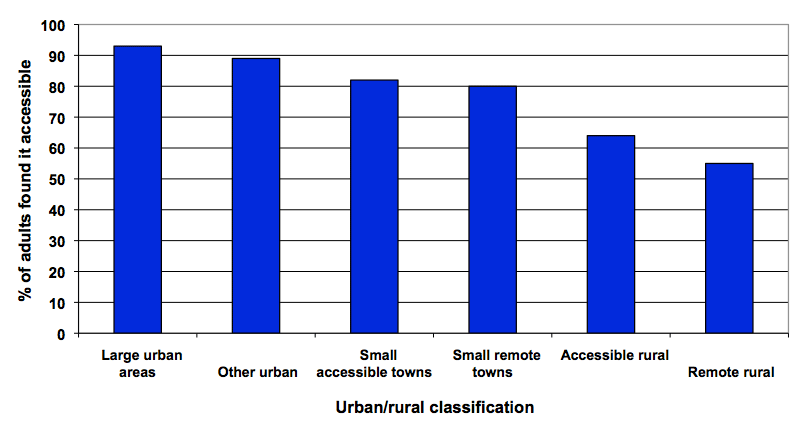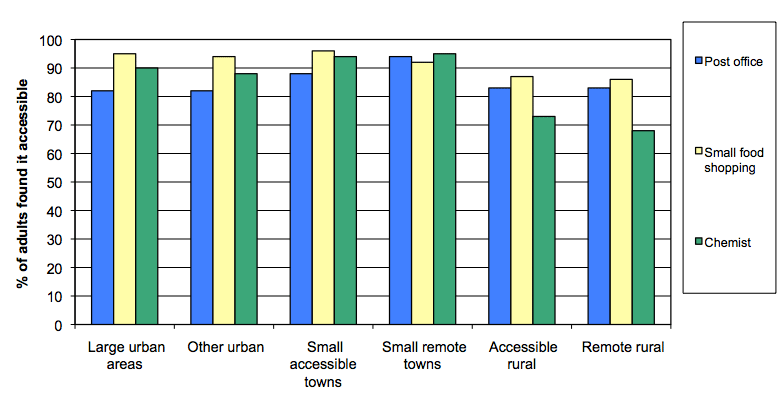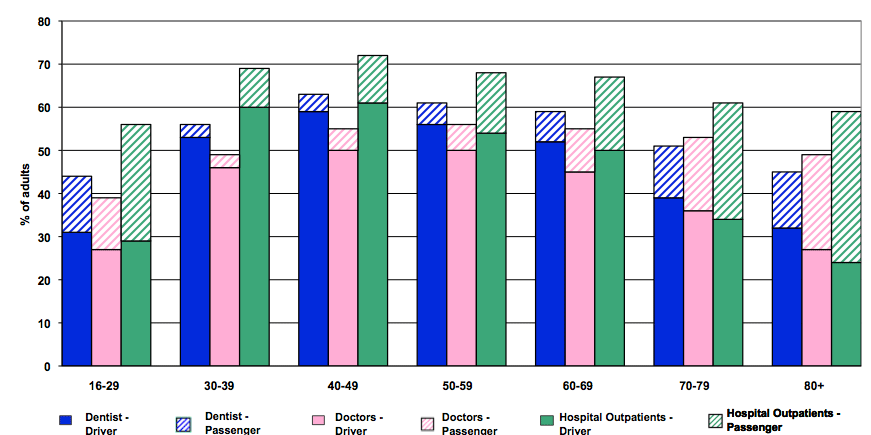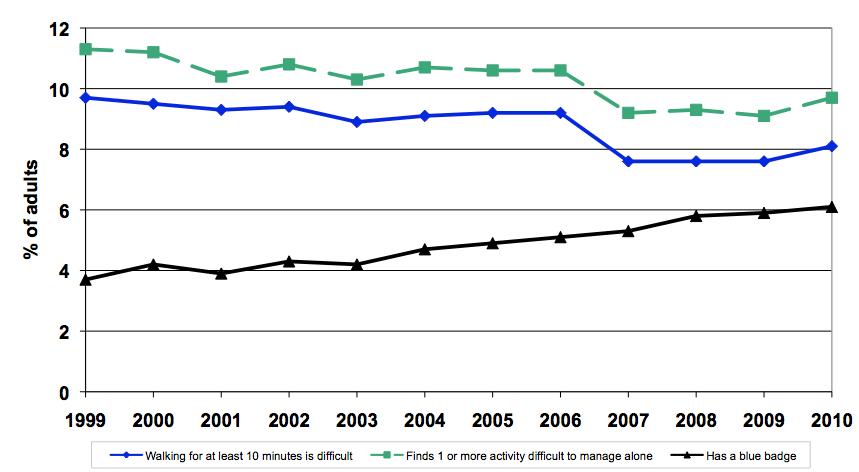Transport and Travel in Scotland 2010
Summarises a broad range of transport statistics including road vehicles, traffic, casualties, bus and rail passengers, road and rail freight, air and water transport and personal travel as well as providing some comparisons with GB figures. Further breakdowns of Scottish Household Survey transport data including households' access to cars and bikes, frequency of driving, modes of travel to work and school, use and opinions of public transport and access to services are also presented.
7 Access to services
- Eighty-five per cent of respondents felt that public transport was very or fairly convenient to access in 2010.
- Respondents travelling to hospital out-patients departments were more likely to be car or bus passengers, as opposed to drivers, than those travelling to the dentist or doctors .
- Ten per cent of the respondents with limiting illness or disability, had difficulty with at least one type of travel activity (walking/car/bus/train/taxi).
Access to services
7.1 Eighty-five per cent of respondents felt that public transport was very or fairly convenient to access in 2010. This figure was considerably lower for those living in rural areas. (Figure 22) [ Table 32]
Figure 22: Respondents who felt that public transport was very or fairly convenient, 2010

7.2 Gender and age had little effect on how respondents felt about access to services, although those over 60 tended to be less likely to find access very or fairly convenient. [ Table 32]
7.3 Respondents with a full driving licence were more likely to say that services were very or fairly convenient to access than those without a driving licence, except when asked about access to public transport, which those without a licence were more likely to find convenient. [ Table 32]
7.4 However, urban/rural location had a greater impact on respondents' views regarding the convenience of services than possession of driving licence or household access to car. There is at least an eight percentage point difference between urban and rural areas for small food shopping compared to only a one or two percentage point difference for car access and driving licence possession respectively. (Figure 23) [ Table 32]

Access to medical services
7.5 In 2007 new questions were added to the SHS that addressed how adults travelled to key medical facilities i.e. dentists, doctors' surgeries, and hospital out-patient departments. [ Tables 33 - 35]
7.6 Fifty-nine per cent of respondents thought hospital out-patients departments were very or fairly convenient to access, rising to 72 per cent for the dentist and 82 per cent for doctors' surgeries. [ Table 32]
7.7 Males were more likely than females to drive to medical facilities, while females were more likely than males to be a car or bus passenger. This reflects trends in travel behaviour as seen in Sections 3 and 4.
7.8 Older and younger age groups were less likely to travel to medical facilities by car, with those aged 40 to 49 most likely to use the car. Older and younger age groups were also more likely to be passengers rather than drivers. Those travelling to hospital out-patients departments were more likely to be passengers, as opposed to drivers, than those travelling to the dentist or doctors. (Figure 24)
7.9 As household income increases respondents were more likely to drive to medical facilities and less likely to walk or take the bus. This pattern is concurrent with findings found in earlier sections. [ Tables 33 - 35]
Adults with mobility problems
7.10 Ten per cent of the respondents with a limiting illness or disability had difficulty with at least one type of travel activity (walking/bus/train/taxi). This has fallen by 2 percentage points since 1999. (Figure 25) Walking for at least 10 minutes is the most common mobility problem, followed by travelling by bus. The number of blue badge holders rose to 6 per cent in 2010, compared to 4 per cent in 2000. [ Table 5]
Figure 24: Car use to key medical facilities by age, 2010

Figure 25: Adults with limited mobility, 2010

There is a problem
Thanks for your feedback